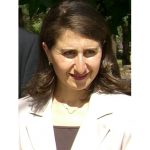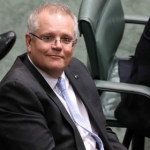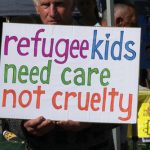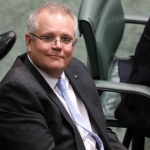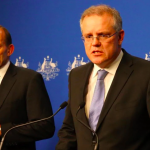NSW Premier Plays the Race Card
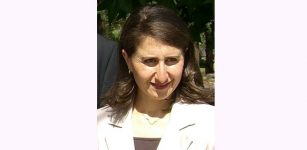
NSW premier Gladys Berejiklian caused a stir last month when she took aim at her new whipping boy: immigrants. The daughter of Armenian migrants herself, the premier said she wants the state’s migration levels to be halved.
“The rates have gone through the roof,” Ms Berejiklian told ABC radio. “Just under ten years ago, we were welcoming about 45,000 people. Two years ago, we were welcoming about 75,000. It’s now 100,000 every single year.”
The Liberal leader suggested that NSW “take a breather” from allowing so many foreigners in, because infrastructure problems in this state aren’t due to poor Coalition planning, but rather, these issues are a result of the flood of people arriving from overseas.
And despite immigration being an issue that the federal government deals with, Ms Berejiklian is calling for a Coalition of Australian Governments meeting that has an exclusive focus on migration into the various states.
Last week, the premier took things one step further in her attempt to return this state’s immigration numbers to “Howard-era” levels, when she established an expert panel tasked with developing NSW immigration policy.
A phantom threat
However, the Guardian Australia crunched the figures and found that while NSW is seeing a rise in net migration numbers, most of the increase is due to international students, who actually boost the state’s economy with billions of dollars every year.
In response to Ms Berejiklian comments, prime minister Scott Morrison pointed out that the figures for permanent migrants arriving in Australia are at levels similar to those at the time Howard was in power. Indeed, the number of permanent migrants actually doubled under that government.
The former immigration minister added that NSW actually requested more than 5,000 extra immigrants be sent to there this year. And then he quipped that Gladys now appears to want these additional migrants to be sent to South Australia instead.
Treasurer Josh Frydenberg threw in his two cents worth stating that the perceived overcrowding in NSW is actually due to problems with the infrastructure.
In 2016-17, the net overseas migration in this state was 104,438 people, which was up from 73,570 in 2006-07. But, this rise has been driven by international students, visitors and skilled workers. It’s not being driven by permanent immigration.
Changing with the climate
Critics have pointed out that Berejiklian’s new focus on immigration isn’t consistent with her own prior stance, as well as that of her party’s. And a looming state election next March might have more to do with her tough new rhetoric and Howard-era referencing.
In an editorial, the Sydney Morning Herald explained that the Liberal National government has been welcoming migrants for the past seven years. And last year, it announced that the Greater Sydney Commission is building thousands of new flats to house the influx of new migrants over the coming decades.
Addressing the Sydney Institute gala dinner in May, Ms Berejiklian declared that immigration numbers in this state were “about right”. And she also said that the influx of talent from different parts of the world will be what gives NSW the edge going into the future.
The NSW premier slammed opposition leader Luke Foley that same month when he stated that there was “white flight” occurring in Sydney’s western suburbs, as “many Anglo families” were being forced to flee to other parts of Sydney due rising migrant numbers.
“Deeply divisive, dangerous and nasty,” was how Berejiklian described her opponent’s comments, just months before she turned around and decided perhaps she does have an issue with the migrant population.
A panel fixation
The NSW immigration review panel is comprised of Peter Shergold, former head of the Australian Public Service, as well as Infrastructure NSW chief executive Jim Betts and Department of Planning and Environment head Carolyn McNally.
But, this expert panel is not the only such panel that Ms Berejiklian has commissioned over recent days. And if the last one is anything to go by, when this panel reports back in two months’ time, we might be up for another “deeply divisive” hard line announcement from the state government.
Following the drug-related deaths of two young people at the Defqon.1 festival in September, the premier tasked another panel with investigating how to improve safety at festivals, which included NSW police commissioner Mick Fuller: the man in charge of ineffective saturation policing.
At a time when there’s a been groundswell of calls for the introduction of pill testing at festivals, Ms Berejiklian specifically told the panel not to consider this harm reduction method that saves the lives of young people.
After the panel got back to the NSW premier with their recommendations, she announced that her government is going to further crack down on drug offences in a step that flies in the face of the evidence that’s screaming out that this approach is actually causing the harms.
Playing the race card
However, while Ms Berejiklian has landed on a scapegoat to blame away some of the problems in this state, it must be said that she’s refrained from the lower level race-baiting that many of her Liberal colleagues have been tossing around recently.
On 1 January this year, then prime minister Malcolm Turnbull told reporters that he condemned the so-called African gang crisis that’s been shown isn’t occurring down in Melbourne. Then Peter Dutton stepped up the next day and said locals were too afraid to go out to dinner because of it.
It’s not the first time Dutton has played the race card. In 2016, he said allowing Lebanese migrants into the country was a mistake. And in March this year, he claimed persecuted white South African farmers were our kind of immigrants.
But, one of the most disturbing and quite bizarre occurrences was when last month all Liberal Party Senators voted in favour of a motion moved by Pauline Hanson that declared “it’s OK to be white”, as if the white majority in this country is somehow under threat.
Indeed, it seems that our premier, Ms Berejiklian, is simply dipping her toe into the harsh, derisive campaign tactics that the Liberals constantly fall back on to appear strong in times of diminishing popularity, whilst pinning the blame on a group of people in a less advantaged position than them.


